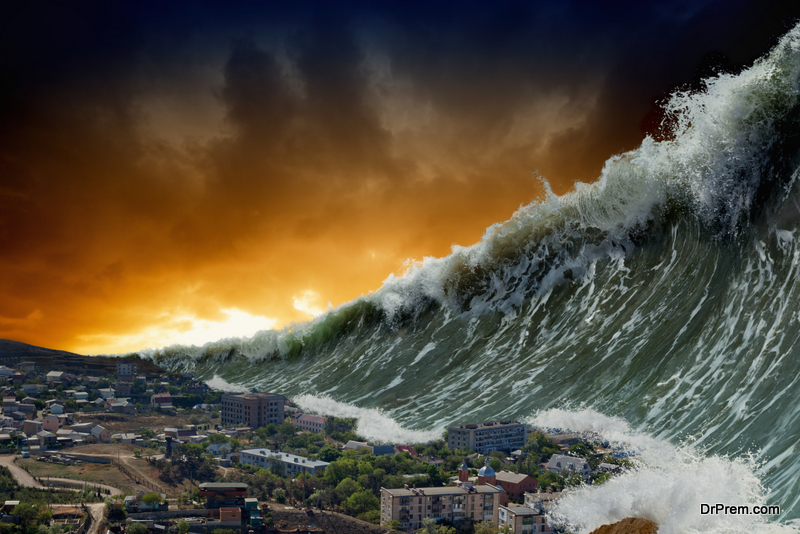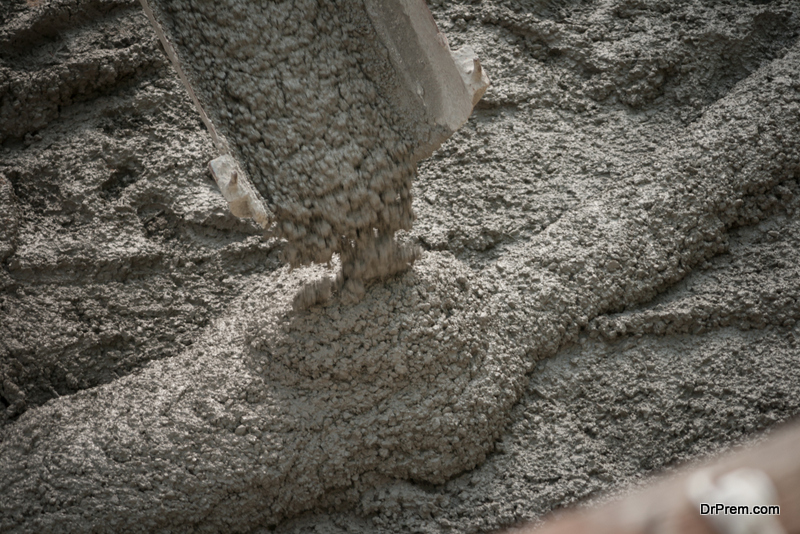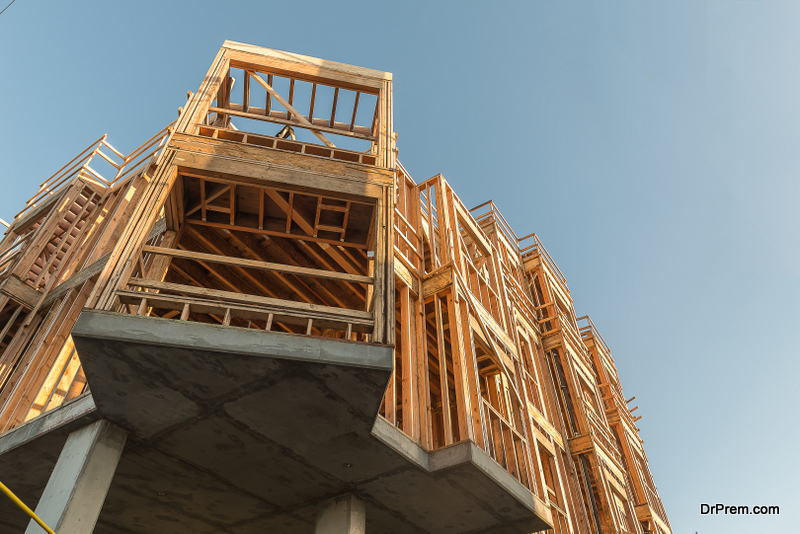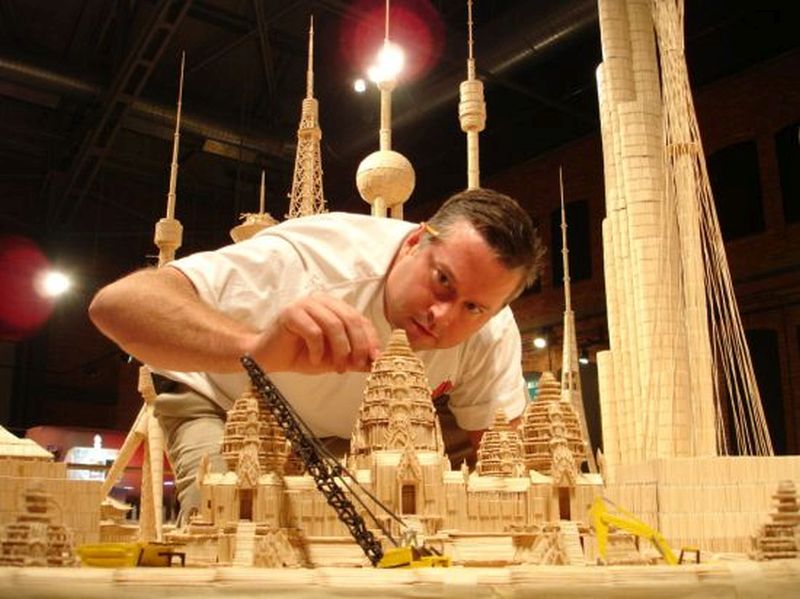Almost everyone wants to build a house or buy one that is on or near the beach. Sun, sand and unfettered access to the water, what is not to love. But with the rising sea levels globally because of indiscriminate global warming, waterfront areas have now become a tsunami prone area.
A tsunami is a gigantic wave or a series of huge waves, or as the Japanese calls it a ‘harbour-wave’. Even though it is said that there is nothing you could do to save yourself from the tsunami that is not true. Embracing safe construction practices and making a disaster resistant building are a few things you can do to mark your house safe in the face of this calamity.
What can Tsunami do to a building?
 Buildings usually fall during tsunamis because they offer a resistance to the path of the wave when it hits. A wave exerts enormous pressure on the building and if it not built properly, it will fall like a house of cards. And in other cases, debris from houses that have fallen, can impact other houses and cause irreparable damages.
Buildings usually fall during tsunamis because they offer a resistance to the path of the wave when it hits. A wave exerts enormous pressure on the building and if it not built properly, it will fall like a house of cards. And in other cases, debris from houses that have fallen, can impact other houses and cause irreparable damages.
Here are number tips including embracing safe construction practices that will help you build a house in a tsunami prone area:
- Use concrete –

When you build a house near the beach, you build it for the sand, the beach view and for the relaxation. But sea salt and the environment around the sea is pretty harsh on houses built by wood. One of the easiest way to make a disaster resistant building is by using reinforced concrete and steel instead of wood. However, wood is a safer option to use to build a house that is an earthquake prone area. For structures that are vertical and need quick evacuation, using concrete is the best option. - Build a house with deep foundations and with design redundancy – One of the key safe building practices is to build a house with deep foundations in a tsunami prone area. Even though a tsunami can overturn concrete houses, houses with deep foundations — with braced footing — often escape its scourge. Also, keep in mind when designing the house, that it can experience partial failure rather than face progressive collapse. This will ensure a quick rebuilding time and save majority of the building from failure.
- Build a house with ample elevation –

One of the best ways to make a disaster resistant building in a tsunami prone area is to build it with height. The taller you make it, the better its chances of survival. A building with significant elevation allows for the water to flow beneath it in case a tsunami or flooding does occur. The best examples are of the houses that are built in California, US of A. If you study them closely, you will find that most of them are built on top of car garages and have doors that are collapsible, in case they come in contact with a major force of water. - Let them weeds grow – Most people do not like any form of vegetation to grow in the vicinity of their houses. But when you are going to build a house in a tsunami prone area, remember that vegetation is actually a good thing. Having a rough terrain around the house actually reduces the force of the wave, which in turn means that its impact on the house will be weaker. It has been discovered that a mangrove swamp reduces the impact of the tsunami considerably on the house. So, do not fuss much and let them grow and expand. They even add a rustic feel to the vibe of the house.
- Install a good pump system to make a disaster resistance building –

Another one off the best and safe building practices is to install a good pump and sump system that is able to pump out water from the house whenever water enters it. The best place to install such a system is at the ground level. It means that even if the house is elevated, the pump will automatically detect the presence of water and start pumping. Most pumps work best when they are coupled with a few barriers and one way water valves which make sure that water does not back up in the property once it has been pumped out of the house. - Every real estate mogul will tell you, location, location, location – Even though taking in the sun and the beach-view is the entire reason to invest in such a property, you also have to be sure of the location when deciding to build a house in a tsunami prone area. Every good real estate agent will always tell you that a good investment is always worth its salt at the right location. In this case, the best case scenario is to buy a property that is as far away from the risk prone area as feasible. Also, one where the warning for the same comes in sufficient time and gives you enough time to evacuate the building and get to safety at the earliest.
Final Words
Even after using safe construction practices, no house is safe from the wrath that is unleashed once a tsunami hits. However, you can always build a house that gives the most chance of surviving this calamitous ordeal and leaving most of the house unscathed, which needs the minimum amount of repair.
Even though you would not like this, choose to build away from the coastline. The view may not be as good as you hoped but the chances of survival shoot up considerably in this case. Buildings that are nearest to the coastline often face the maximum damage.
After the Tsunami’s that impacted Japan and India, architects and real estate developers all over the world have shifted their focus to building more disaster resistant buildings. They have also taken extra precautions while designing and developing a tsunami prone area. But one can never be too careful, can they.



